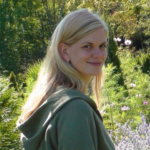|
Here is a guest post from our friend Rebecca Pellerin. You can find a link to her website at the bottom of the post.
I came across the term wei wu wei while looking up various exercises and learned that, ironically, it means: “doing not-doing,” or “strategic non-action.” This concept is a stretch for the Western mind. Doing not-doing? How is that even possible? I explored this practice in my personal life over the next several months. Mostly, I began noticing that I am seriously addicted to “doing.” In fact, I’ll do most anything to avoid doing nothing. One of my teachers, Dr. Claudia Welch, has referred to this as “hidden camera syndrome.” She explains that many of us suffer from the habit of quickly picking up a magazine or leaping off the couch when someone arrives, in fear they might catch us doing nothing. The pressure and addiction to busyness in our daily lives can present itself as a constant “clenching” (mentally, emotionally, and physically). We are always gripping, perhaps for fear that we might lose control. In Dr. Welch’s book, Balance your Hormones, Balance your Life, she explains that “[…] from an Eastern perspective, stress seriously interferes with our qi, or life force. Qi works best when it is circulating smoothly. When we are stressed out, we tend to clench parts or all of our bodies, constricting the natural flow of qi until it stagnates, leading to tissue, organ, or system disorders.” (26, Welch) What does this have to do with standing? As I’ve come to realize, a lot. I am currently participating in Jonathan FitzGordon’s Yoga Teacher Training. Our entire first class was focused on “tadasana,” the seemingly simple yoga pose that looks a lot like standing, but in this case hopefully in proper alignment and with ease. I am reminded of the words from Patanjali’s Yoga Sutras, Sthira sukham asanam, which loosely translates to “the posture should be stable and easeful.” Sthira means “stable” or “steady.” In fact, the sthi in sthira is the same sthi that is found in the Sanksrit word asthi, which means “bone.” The function of bones in the body is to hold the body up, to keep us steady and stable. Sukha translates to ease, happy, or good. Su means “good” and kha means “space.” So literally, sukha means “good space.” Therefore, when in any particular posture, but perhaps most especially when standing, one should allow the bones to provide stability; if successful, one’s body will naturally fall into a “good space,” each part landing exactly where it belongs. This is the foundation for easeful standing. I learned in our first class with Jonathan that I chronically clench my buttocks. I’m using my muscles to hold me up instead of my bones. And as a result, nothing is quite in the right place and my body is doing a lot more work than it needs to do. As Dr. Welch noted, this also happens to be blocking the flow of prana or qi, and is creating stagnation and pain as a result. When I first started practicing wei wu wei (strategic non-action) last year, it felt like a lot of work. In fact, it still comes as a challenge many days. But over time, “doing not-doing” has gradually become more natural for me and has made a huge impact on my emotional, mental, and physical well-being. I can see that the same will be true of proper standing. Right now, as I push my butt out into “a room of its own” (as Jonathan likes to say), and push my thighs back so that my bones are bearing the weight of my body (instead of my muscles), I feel a bit like a stranger in my own body. I don’t have to clench everything to hold myself in space. New sensations are arising as I awaken parts of me that have been ignored. The art of doing nothing while standing is challenging at first, yes, but with daily practice, my body will be revitalized with prana or qi and my supple parts will become supple again. In the same way that wei wu wei has brought a sense of stability and ease into my daily life, so will standing in alignment bring stability and ease back into my body. What does “doing not-doing” look like in my life?
For more on wei wu wei, check out this article by Psychology Today. What does proper standing look like? References:
1. Welch, Claudia. Balance Your Hormones, Balance Your Life. Cambridge: Da Capo Press, 2011. Print. |

 I first learned about wei wu wei when googling some basic qigong exercises. I was looking for a gentle activity I could do in my bedroom after abdominal surgery last year. I was experiencing significant weakness and had read that qigong may facilitate healing with minimal effort on my part. That sounded pretty good to me.
I first learned about wei wu wei when googling some basic qigong exercises. I was looking for a gentle activity I could do in my bedroom after abdominal surgery last year. I was experiencing significant weakness and had read that qigong may facilitate healing with minimal effort on my part. That sounded pretty good to me.